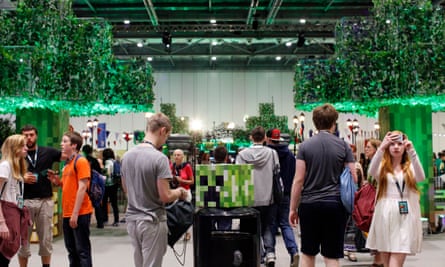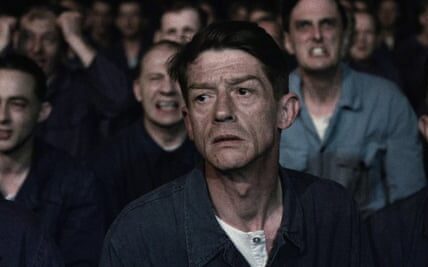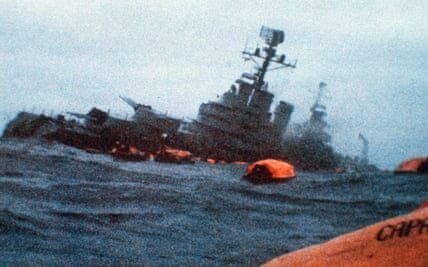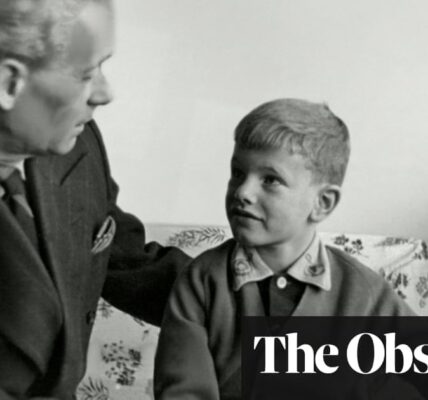A few days ago, I was tidying my home office – which more closely resembles a video game arcade recently hit by a tornado – when I found a long-lost piece of technology in the bottom drawer of my filing cabinet. It was an old Xbox 360, the Elite model – black, heavy, ungainly, impossibly retro. Out of curiosity, I hauled it out, found a controller and power cable and switched it on. I knew immediately what I wanted to look for, but I was also apprehensive: I didn’t know how I’d feel if Minecraft was still there – or worse, if it wasn’t. Minecraft, you see, is more than just a game for me. I thought about just putting the console back where I found it. But as this month sees the 15th anniversary of the game’s original release, I felt I had to go on.
In 2012, Microsoft held a big Xbox Games Showcase event at a cavernous venue in San Francisco. The company was showing all the biggest titles of the era – Forza, Gears of War, Halo – but in one quiet corner sat a couple of demo units showing off the as yet unreleased Xbox version of Minecraft. I already knew about the game, of course – designed by Swedish studio Mojang, it was an open-world creative adventure, allowing players to explore vast, procedurally generated worlds, collect resources and build whatever they wanted. It was already attracting millions of players on PC. But I had never really given it much time; so I sat down to have a quick go … and ended up staying for an hour. There was something in it that was holding me there, despite all the other games on offer. That something was Zac.

It was earlier that year that my oldest son had been diagnosed on the autism spectrum – confirming something we had known for years. At seven years old, he had a very limited vocabulary, was terrified by change, and was withdrawn and isolated at school. The worst part was that he had no avenues to express himself. His verbal communication was stilted, he struggled at drawing or building with Lego. He was trapped within himself. But he loved technology and games, and I saw in Minecraft a possible means for him to escape.
As soon as we loaded the game on to our Xbox 360 at home, he was hooked. He loved the game immediately – it was safe, it had constant rules and systems, the music was relaxing, and it let him build stuff with just a controller and a few button presses. In 2015 I wrote a Guardian article about the effect the game had on his life, the way it taught him new words, new concepts, the way it showed him, so patiently, so carefully, that he was a creative being too. Sadly, my feelings about the game’s original creator have changed due to a lot of troubling things he has said online, but what I wrote about Minecraft itself remains true. An editor at Little, Brown Book Group named Ed Wood read the article and approached me about writing a novel based on our experiences. Boy Made of Blocks went on to sell 200,000 copies, and Ed and I have worked on novels together ever since. In so many ways, Minecraft changed my life.
At first, it seemed I would not be able to find it again. When I booted up the old machine it wouldn’t let me sign into my Xbox Live account, and the version of the game I had on the hard drive was a trial copy so I couldn’t load saves. I was crestfallen. I was sure this was the version of the game I’d first played with Zac and his younger brother, Albie – the three of us together, building worlds. Did those worlds still exist, locked away on the hard drive? I was so tantalisingly close.
Over the past 15 years, Minecraft has had a similar impact on many thousands of players – it has helped people combat loneliness, discover their gender identity, and to overcome their fear of change. The Hour of Code initiative, launched in 2015, has taught basic coding principles. Since its release, Minecraft has also found its way into schools around the world, with a special Education Edition designed to help teachers utilise the game in classroom projects, from imagining sustainable future landscapes to studying Macbeth. It has also been used by a variety of charities such as Block by Block, which encourages communities to reimagine their local environment, and the World Wildlife Fund to raise awareness about panda conservation. It has been used as a tool for political messaging. Reporters Without Borders have used the game to create the Uncensored Library where people who live in countries where the media are restricted can access forbidden books and articles.
It is a much more complex game now than when we first played. Regular updates have brought in new animals, new resources, new non-player characters – the visuals have been updated with support for modern technologies such as HDR. But game director Agnes Larsson assures me the company keeps the core principles of the game intact. “We try to think about like the simple beauty of Minecraft,” she says. “So each new thing can be seen as a toy that we add to the sandbox and it should preferably have a very clear purpose and simple rules, because that means that since everything in itself is simple, the players can do endlessly complex things.”
Like Fortnite, it has also become a self-contained multiverse – a place where people go to hang out, to socialise, to play together even when they can’t be together. “Minecraft felt extra magical during Covid,” says Larsson. “I mean, the whole world shut down and suddenly we were just in a very different and hard situation. And yes, we heard about so many players who were able to stay in contact with friends and family thanks to Minecraft. Now and then, we also hear stories about kids being in hospital and they can still have fun with their friends in the Minecraft world, even if they can’t be in school.”
After a few hours of online searching, I figured out how to access my Xbox Live account using an app to bypass modern TFA security and therefore my old Xbox 360 profile sprag back into life. I found a boxed copy of the game in the attic. I loaded it up and that music started – a wilting piano tune composed by Daniel Rosenfeld, slow and calm and somehow sad. The memories flooded back.
When Boy Made of Blocks was published, something odd happened. People started to share their experiences of the game with me. I have given many talks about Minecraft and my novel. I have spoken at NHS events, at EU meetings in Brussels, at Comic Cons and book festivals. Almost every time, when the talk finishes, there will be a family waiting behind to speak to me. It’ll be a parent or parents, shepherding with them a shy child or young adult. They won’t really have questions, they’ll just say to me, “we wanted you to know that Minecraft changed our lives too” – and they’ll tell me their story. Often, it’s about attention deficit hyperactivity disorder or autism or bullying, and how difficult things were and how lonely their child was. But those tales always culminate with the same words: “And then they started playing Minecraft”. We will share experiences, there will be laughter, reminiscence, handshakes, sometimes tears. It is such a privilege to be trusted in this way.
I found the old saved games. Dozens of them. Here were blocky castles with secret tunnels leading to vast diamond mines. Here were our houses, each of us with our own rooms, loaded with treasure chests. There was still a food store containing pork chops and cake, and a fully stocked armoury, no doubt ready for an adventure that never happened. Cows were grazing quietly in our farm; crops were growing. It was like revisiting an old family home – the same, but also irrevocably different.
after newsletter promotion
My sons play video games with their friends now. Yet, while the game still exists, there’s a chance we will return to playing Minecraft together. “Minecraft is so generational,” says Larsson. “My daughter, she’s seven and she had a school break earlier this spring and we went to my parents and my mom was like, ‘can you teach me Minecraft?’ So then the school break turned into me, my mum and my daughter playing together in the same world, which was so nice.”

The imagined worlds we create with friends or with our children, exist as something tangible. Even when we grow up, grow old or grow apart, we can retrace our steps. The world I shared with Zac and Albie is still there, on an old games console, now safely stored away again in my filing cabinet. The things we did, the houses we built – it all remains, as real as memories.
I hope that many other families have these experiences in the future: fortunately, I don’t think the game is going anywhere. “We see it is that Minecraft is bigger than us,” says Larsson. “We’re lucky that right now we take care of Minecraft and when we hand it over to the next generation of game developers, we hand over a Minecraft that’s still about creativity, still enables players to express themselves. We definitely try to have a very long-term perspective; we never add something that is only fun the first time you play with it because the hope is that when we add something it will be loved in 10 or 15 or even 50 years from now.”
In my heart I will always carry with me the image of my son, my little boy, showing us the world he had crafted inside this game, I’ll always remember how he finally found a place that made sense. Minecraft was a door opening, and 15 years later, that door remains accessible and unlocked. Anyone can come in.
Source: theguardian.com



